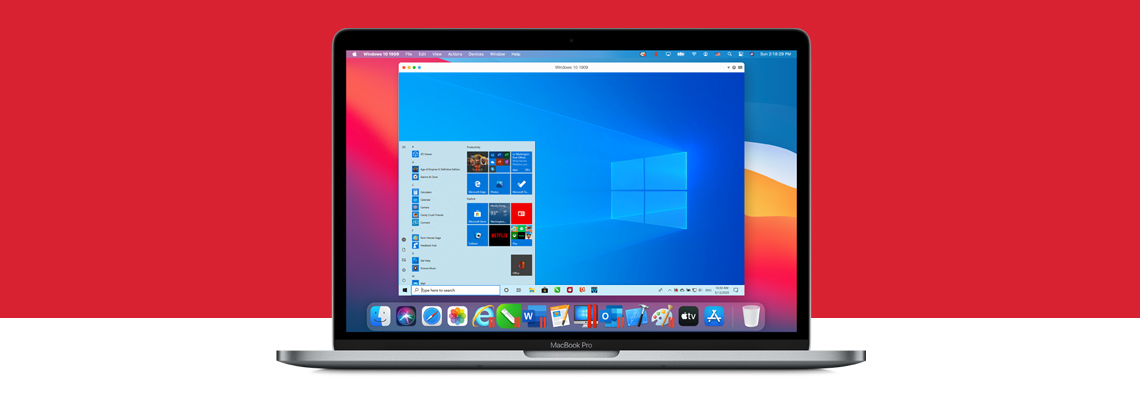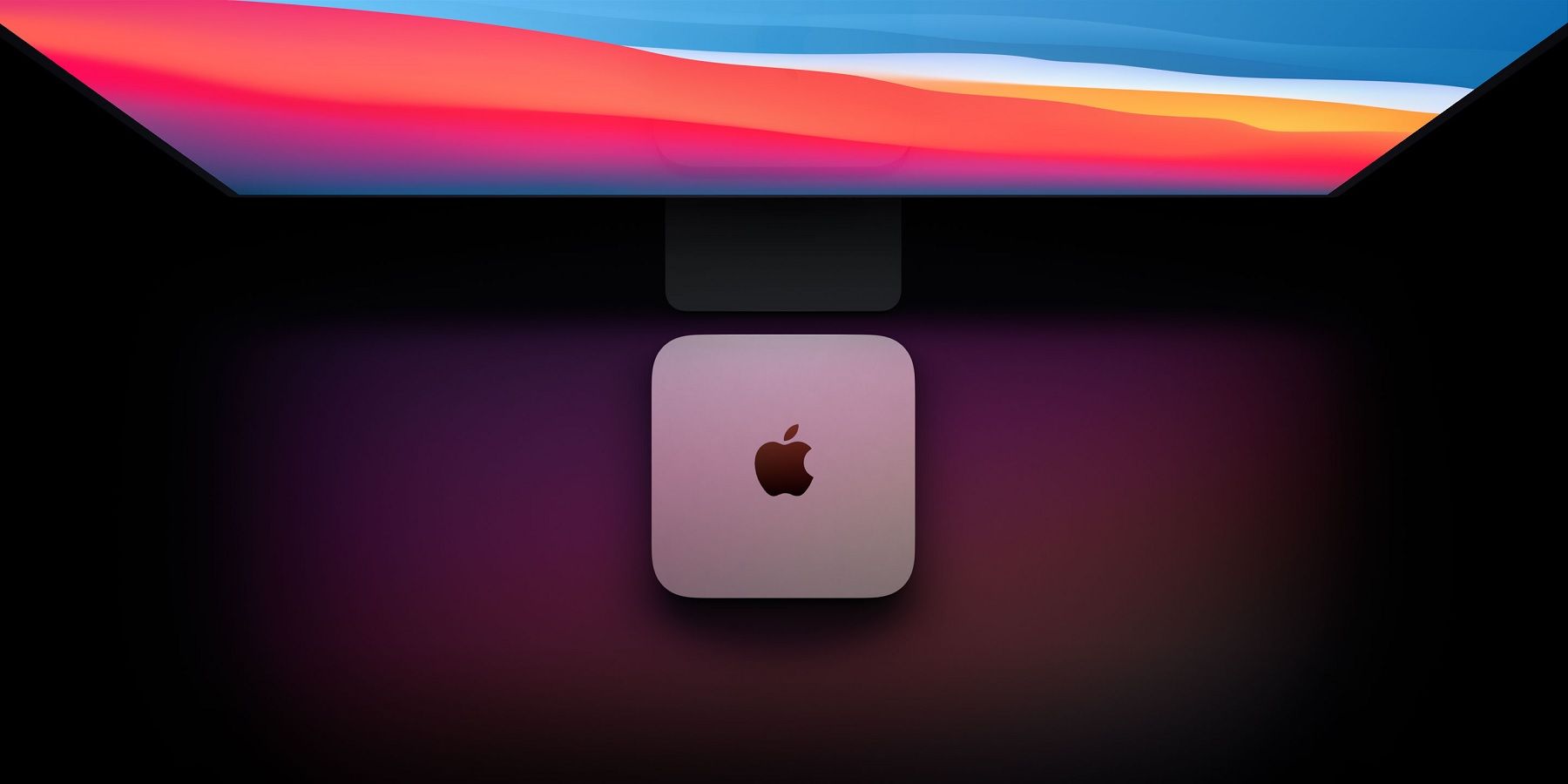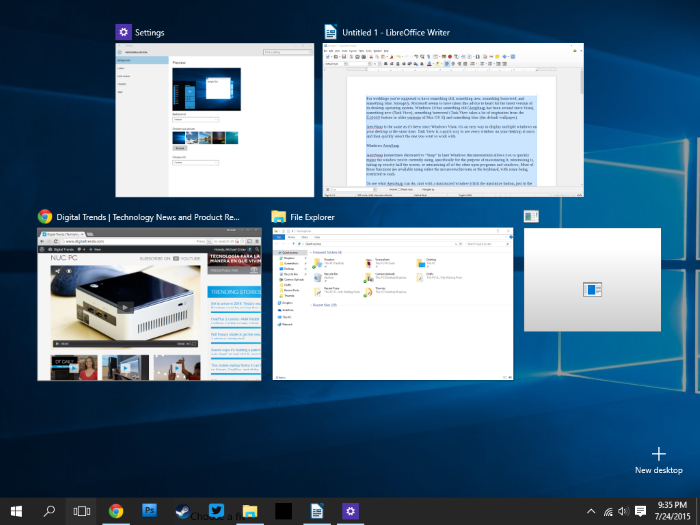Parallels Desktop 16.5 for Mac natively supports Mac computers with either Apple M1 chips or Intel processors. Parallels Desktop 16.5 uses 2.5 times less energy on an M1 MacBook than a 2020 Intel. AutoCAD, Revit, A Plague's Tale, Resident Evil 2 and Dead or Alive 6 all running on Apple Silicon, thanks to the power of Windows 10 Dev and Parallels 16.TES. Parallels Desktop for Mac with Apple M1 chip Apple’s “one more thing” event on November 10, 2020, revealed the first Mac computers powered by the Apple M1 chip. Parallels is excited to see the performance, power efficiency, and virtualization features that are brought to the Mac with the Apple M1 chip. You now have a reliable and quick way to run Windows 10 on an M1-based Mac — provided you're willing to make some tradeoffs. Parallels has released Desktop 16.5 for Mac with full support for M1. Apr 14, 2021 Parallels today announced the release of Parallels Desktop 16.5 for Mac with full support for M1 Macs, allowing for the Windows 10 ARM Insider Preview and ARM-based Linux distributions to be run.
- Parallels Desktop 16 For M1 Mac Technical Preview
- Parallels Desktop For Mac M1
- Parallels Desktop M1 Mac Os
- Parallels Desktop 16 For M1 Mac Technical Preview 2
- Parallels Desktop M1 Mac Version
BELLEVUE, Wash., April 14, 2021 (GLOBE NEWSWIRE) -- Parallels®, a global leader in cross-platform solutions, today released the highly anticipated Parallels Desktop 16.5 for Mac (parallels.com/desktop), which features full native support for Mac computers equipped with either Apple M1 or Intel chips. Experience Windows 10 ARM Insider Preview and its applications on Apple M1 Mac computers.2 The M1 chip’s superior performance delivers the world’s fastest integrated graphics in a personal computer, revolutionary power efficiency, and was designed to work with macOS Big Sur3—which Parallels Desktop 16.5 transforms into a new standard for a seamless Windows-on-Mac experience. It also delivers M1 support for the most popular ARM-based Linux distributions. Separate Parallels Access (parallels.com/access) and the just-redesigned and simplified Parallels Toolbox (parallels.com/toolbox) apps, which are both included for free concurrently with Parallels Desktop subscriptions, now also provide native support for M1 Mac computers.
'Apple's M1 chip is a significant breakthrough for Mac users,” said Nick Dobrovolskiy, Parallels Senior Vice President of Engineering and Support. “The transition has been smooth for most Mac applications, thanks to Rosetta technology. However, virtual machines are an exception and thus Parallels engineers implemented native virtualization support for the Mac with M1 chip. This enables our users to enjoy the best Windows-on-Mac experience available.”
More than 100,000 M1 Mac users tested the Technical Preview of Parallels Desktop 16.5 for M1 Mac and ran Microsoft’s Windows 10 on ARM Insider Preview, as well as tens of thousands of different Intel-based Windows applications—including Microsoft Office for Windows, Microsoft Visual Studio, SQL Server, Microsoft PowerBI and MetaTrader.
“We received enthusiastic feedback about the remarkable performance of both the Technical Preview of Parallels Desktop 16 for M1 Mac and Windows 10 on ARM Insider Preview as well as x86 applications and games, including Rocket League, Among Us, Roblox, The Elder Scrolls V: Skyrim, Sam & Max Save the World and many others. Testers loved Parallels Desktop’s easy-to-use features and seamless integration of Windows with macOS Big Sur, which increased productivity,” said Dobrovolskiy.
Watch a video demo of how to install virtual machines (VMs) in Parallels Desktop 16.5 on an M1 Mac: www.parallels.com/VMonM1Mac.
The virtualization approach for Parallels Desktop 16.5 for Mac enables users to benefit from Apple’s M1 chip performance advancements—applications run faster and more efficiently. Performance observations include:
- Up to 250 percent less energy used: On a Mac with an Apple M1 chip, Parallels Desktop 16.5 uses 2.5 times less energy than on a 2020 Intel-based MacBook Air computer.4
- Up to 60 percent better DirectX 11 performance: Parallels Desktop 16.5 running on an M1 Mac delivers up to 60 percent betterDirectX 11 performance than on an Intel-based MacBook Pro with Radeon Pro 555X GPU.5
- Up to 30 percent better virtual machine performance (Windows): Running a virtual machine (VM) of Windows 10 on ARM Insider Preview on Parallels Desktop 16.5 on an M1 Mac performs up to 30 percent better than a Windows 10 VM running on Intel-based MacBook Pro with Intel Core i9 processor.6
“I installed Parallels Desktop 16.5 for Mac and Windows 10 on ARM Insider Preview on my M1 Mac Mini because, as a math teacher, several software apps that I use are no longer supported on M1 Mac,” said Daniel Dudley, Albuquerque, NM, United States. “Running Windows on my M1 Mac in Parallels Desktop 16.5 has been awesome. It’s the fastest version of Windows that I have ever had!”
Parallels Desktop 16.5 for Mac also supports guest operating systems (OSs) on M1 Mac computers including Linux distributives Ubuntu 20.04, Kali Linux 2021.1, Debian 10.7 and Fedora Workstation 33-1.2.
“I absolutely love being able to run Linux environments within Parallels Desktop 16.5 on my M1 Mac,” said Darren Paxton, United Kingdom. “The performance is simply amazing.”

All the best Parallels Desktop 16 for Mac features have been re-engineered for the Apple M1 chip, including:
- Coherence Mode: Run Windows applications on your Mac as if they were native Mac applications, without managing two separate desktops or rebooting.
- Shared Profile: Share your Mac desktop, pictures, documents, and other folders with a VM for easy access.
- Touch Bar controls: Quickly access apps in your virtual machine and customize your Touch Bar shortcuts to feature the apps and commands you use most.
- Mac keyboard layouts: Easily customize your keyboard menu and shortcuts for a more personalized experience.
- Hundreds of other Parallels Desktop features are included to help make it simple for customers be more productive.
- macOS Big Sur in a VM is a feature that Parallels hopes to add support for in Parallels Desktop later this year.
Highlights of Parallels Desktop 16’s extensive features for Intel-based Mac computers are available in this press release. Intel-based Parallels Desktop for Mac customers can run more than 50 supported guest OSs, including several versions of Windows, macOS, OS X, Linux, as well as Android OS and dozens more.
Parallels Desktop 16 For M1 Mac Technical Preview
Availability and Pricing
All editions of Parallels Desktop 16.5 update for Mac support both M1 and Intel Mac computers (Standard Edition, Pro Edition and Business Edition). They can be purchased either online at parallels.com/desktop (which also offers free full-featured 14-day trials) or from retail and online stores worldwide. Parallels Desktop subscriptions include complimentary concurrent subscriptions to Parallels Access, and just-redesigned and simplified Parallels Toolbox for Mac and Windows, which are also separately available for free trials and subscriptions at parallels.com.
Anyone with a Parallels Desktop 16 for Mac license can get an automatic update to Parallels Desktop 16.5 at no additional cost. And, when new full versions of Parallels Desktop for Mac are released annually, customers with active subscriptions receive complimentary upgrades, which ensure support for the latest OSs, hardware, and Parallels Desktop’s innovative features.
Running VMs on Apple M1 Mac computers in Parallels Desktop 16.5 requires ARM-based operating systems (OSs). Customers who install guest operating systems in Parallels Desktop virtual machines are responsible for making sure that they are compliant with each OSs’ end-user licensing agreement (EULA).
Recommended Retail Price (RRP)

Parallels Desktop 16.5 for Mac
- Upgrade your Parallels Desktop 14 or 15 to a perpetual license – US$49.99
- New subscription – US$79.99 per year
- New perpetual license – US$99.99
Parallels Desktop for Mac Pro Edition
- Upgrade from any edition – US$49.99 per year
- New subscription – US$99.99 per year
Parallels Desktop for Mac Business Edition
- US$99.99 per year
About Parallels
Parallels is a global leader in cross-platform solutions that make it possible and simple for businesses and individuals to use and access the applications and files they need on any device or operating system. Parallels helps customers leverage the best technology out there, whether it’s Windows, Mac, iOS, Android or the cloud. Parallels solves complex engineering and user-experience problems by making it simple and cost-effective for businesses and individual customers to use applications wherever they may be—local, remote, in the private datacenter or in the cloud. Parallels, a business unit of Corel, has offices in North America, Europe, Australia and Asia. Visit parallels.com/about for more information.
About Corel
Corel® products enable millions of connected knowledge workers around the world to do great work faster. Offering some of the industry's best-known software brands, Corel gives individuals and teams the power to create, collaborate, and deliver impressive results. Success is driven by an unwavering commitment to deliver a broad portfolio of innovative applications – including CorelDRAW®, MindManager®, Parallels®, and WinZip® – to inspire users and help them achieve their goals. To learn more about Corel, please visit www.corel.com.
Media Contacts
John Uppendahl, Vice President of Communications, john@parallels.com, +1 425 282-1734
Ryan Donough, Burson Cohn & Wolfe, ryan.donough@cohnwolfe.com, +1 415 403-8311
1. Running Windows at native speeds on your Mac depends upon its hardware configuration. Parallels Desktop for Mac has more than seven million customers.
2. Running VMs on Apple M1 Mac computers in Parallels Desktop 16.5 requires ARM-based operating systems (OSs). Customers who install guest operating systems in Parallels Desktop virtual machines are responsible for making sure that they are compliant with each OSs’ end-user licensing agreement (EULA).
3. Apple M1 chip performance, power efficiency, and information is from https://www.apple.com/mac/m1/.
4. Performance measurements conducted by Parallels by measuring Mac power consumption with Windows 10 running. Tested with a pre-released version of Parallels Desktop 16.5 on MacBook Air 10,1 with Apple M1 chip and 16GB RAM versus MacBook Air 8,2 with Intel Core i5-8210Y and 8GB RAM. The performance will vary based on usage, system configuration, and other factors.
5. Performance measurements conducted by Parallels by running the Unigine Valley benchmark for DirectX 11 API and comparing an average score out of five iterations on each computer. Tested with a pre-release version of Parallels Desktop 16.5 on MacBook Pro 17,1 with Apple M1 chip and 16GB RAM versus MacBook Pro 15,1 with Intel Core i9-8950HK, 16GB RAM and Radeon Pro 555X GPU. The performance will vary based on usage, system configuration, and other factors.

6. Performance measurements conducted by Parallels by running the Geekbench 5 benchmark and comparing an average score out of five iterations on each computer. Tested with a pre-release version of Parallels Desktop 16.5 on MacBook Pro 17,1 with Apple M1 chip and 16GB RAM versus MacBook Pro 15,3 with Intel Core i9-8950HK, 32GB RAM and Radeon Pro Vega 20 GPU. The performance will vary based on usage, system configuration, and other factors.
©2021 Parallels International GmbH. All rights reserved. Parallels, the Parallels logo, and Coherence are trademarks or registered trademarks of Parallels International GmbH in Canada, the U.S., and/or elsewhere. Corel, CorelDRAW, MindManager, and WinZip are trademarks or registered trademarks of Corel Corporation in Canada, the U.S. and elsewhere. Apple, Mac, macOS, and Launch Pad are trademarks of Apple Inc. Android is a trademark of Google LLC. Linux is a trademark of Linux Foundation. Windows Microsoft Office, Visual Studio, and SQL Server are trademarks of Microsoft. All other company, product and service names, logos, brands, and any registered or unregistered trademarks mentioned are used for identification purposes only and remain the exclusive property of their respective owners. Use of any brands, names, logos or any other information, imagery, or materials pertaining to a third party does not imply endorsement. We disclaim any proprietary interest in such third-party information, imagery, materials, marks, and names of others. For all notices and information about patents please visit https://www.parallels.com/about/legal/
A video accompanying this announcement is available at https://www.globenewswire.com/NewsRoom/AttachmentNg/fdc9d4a9-8ae0-4adb-a145-82b06c2d8f6d
For years, people have speculated about the ability to run iOS apps on the Mac. This speculation was caused by the increasing similarity in the user experiences across the Mac, the iPhone and the iPad, and by Apple’s continuing tech demos showing their work on this capability.
Well, that day has finally arrived. Parallels® just released a new version of the Parallels® Access iOS client that can also be run on an M1 Mac.
I will admit that I was never really that interested in running an iOS app on my Mac, but I now see that I was wrong. This is pretty neat! In addition to Parallels Access, I installed a few other iOS apps on my Mac, among them, HBO Max. In general, a dedicated, special built app will almost always be better than using a webpage with similar functionality. And that is true for Parallels Access and true for HBO Max.
How to install an iOS app on an M1 Mac
The process of finding iOS apps that you want to download and install on an M1 Mac is a bit obtuse right now. (Figure 1). You use the App Store, but to find the iOS apps, you must first go to your account by clicking on your name in the main App Store window, and then use the selector buttons “Mac Apps” or “iPhone & iPad Apps” and choose “iPhone & iPad Apps”. Then you can search for the iOS app you want, for example “Parallels Access”. Hopefully, this will be easier and less circuitous in the future.
Parallels Desktop For Mac M1
If you can’t find an iOS app that you know exists, this may be because the developer has marked the app as not downloadable on a Mac. This is often because the developer has not yet tested the iOS app on the Mac.
Running the Parallels Access iOS client on a Mac
Running the Parallels Access iOS client on a Mac looks just like using it on an iPad (Figure 2).
In this figure you can see that I have seven remote computers set up in Parallels Access: three MacBook Pros, two 27˝ iMac computers, one 21˝ iMac running macOS Catalina, and a really old ThinkPad running Windows 7. I can access any of them from the Parallels Access client on my iPad or on my M1 MacBook Pro. (Of course, I can also access these remote computers from any computer with a modern browser, but that is not the focus of this post.) Most importantly, the experiences on the M1 Mac and the iPad are nearly identical. The Mac has no touch screen, and the iPad has no mouse, but aside from these differences, Parallels Access is the same on both platforms.
Video 1 shows some of the Parallels Access functionality from the iOS client running on the M1 MacBook Pro. You can see the Remote Assistance feature added to Parallels Access last summer is available in Parallels Access when you run it on the M1 Mac.
I am also happy to report that the amusing “bug” that is present in almost every remote access application is present in Parallels Access on the M1 Mac: the ability to recursively access the very computer you are running the application from. You can see the result of this in Figure 3.
If you have an M1 Mac, let us know in the comments what iOS apps you have installed on it.
Parallels Access terminology check
Parallels Access is composed of two pieces of software: The Parallels Access client, which is installed on your phone or tablet, and the Parallels Access agent, which is installed on your Mac and PC. These two pieces of software work together to deliver remote access to your Mac and PC. You may have heard that:
Parallels Desktop M1 Mac Os
The latest version of Parallels Access is a universal binary, meaning it contains the necessary code to run at full speed on either Mac with Intel processor or Mac with the Apple M1 chip.
Parallels Desktop 16 For M1 Mac Technical Preview 2
This is true, but at the time that this was written, the only part of Parallels Access that ran on the Mac was the agent, so saying that the agent is now a universal binary is unnecessary. Well, the world has changed. Since Parallels Access can now run on the Mac—actually only on a Mac with an M1 chip—I would re-word that earlier statement to become:
Parallels Desktop M1 Mac Version
The latest version of the Parallels Access agent is a universal binary, meaning it contains the necessary code to run at full speed on either Mac with Intel processor or Mac with the Apple M1 chip.
